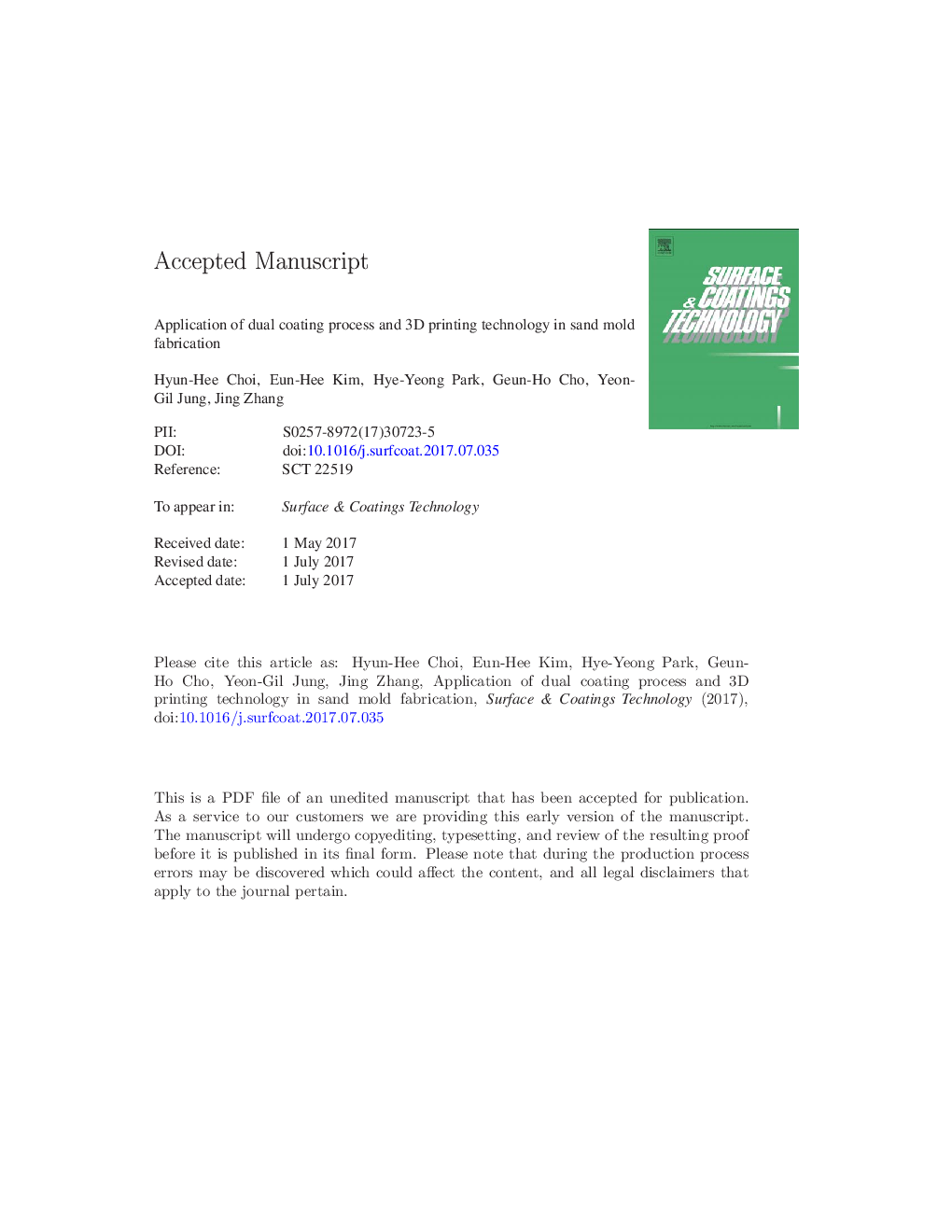| Article ID | Journal | Published Year | Pages | File Type |
|---|---|---|---|---|
| 8024785 | Surface and Coatings Technology | 2017 | 27 Pages |
Abstract
A new dual coating process has been developed for complex sand mold casting using three-dimensional (3D) printing technique. In the dual coating process, two types of polyvinyl alcohols (PVAs) with different decomposition points were applied, unlike conventional casting methods that use just one organic binder. Mullite bead (~ 200 μm), mullite powder (~ 16 μm), and zircon flour (~ 43 μm) were used as starting materials, which were coated with PVA aqueous solution and then recoated with an inorganic binder. The coated powders were heat-treated at 1000 °C for 1 h, followed by a 3D printing process. The sample was heat-treated at 250 °C for 4 h to burn out the PVA with a lower decomposition point. The heat-treated sample was dipped into the solution of the inorganic binder composed of tetraethyl orthosilicate and sodium methoxide, which are the silica and sodium oxide precursors, respectively. After drying at 80 °C for 1 h, the final heat treatment was conducted at 1000 °C for 1 h to produce an organic-inorganic conversion reaction. In the case of the starting materials composed with the same composition, as the particle size became smaller, higher surface roughness and strength were obtained. The highest green and firing strength could be obtained in the samples with zircon flour and mullite bead, respectively. These results confirm the feasibility of combining a new coating process with 3D printing technology.
Related Topics
Physical Sciences and Engineering
Materials Science
Nanotechnology
Authors
Hyun-Hee Choi, Eun-Hee Kim, Hye-Yeong Park, Geun-Ho Cho, Yeon-Gil Jung, Jing Zhang,
